Saru Maru, Sanchi, Satdhara, and Stupas and Stupas
There’s the wind of the plains about the monuments, but the sun bears down hard on the place, and the few trees around don’t help so much the crowds of tourists and devotees. As regards the stupas, they aren’t designed to offer shade.
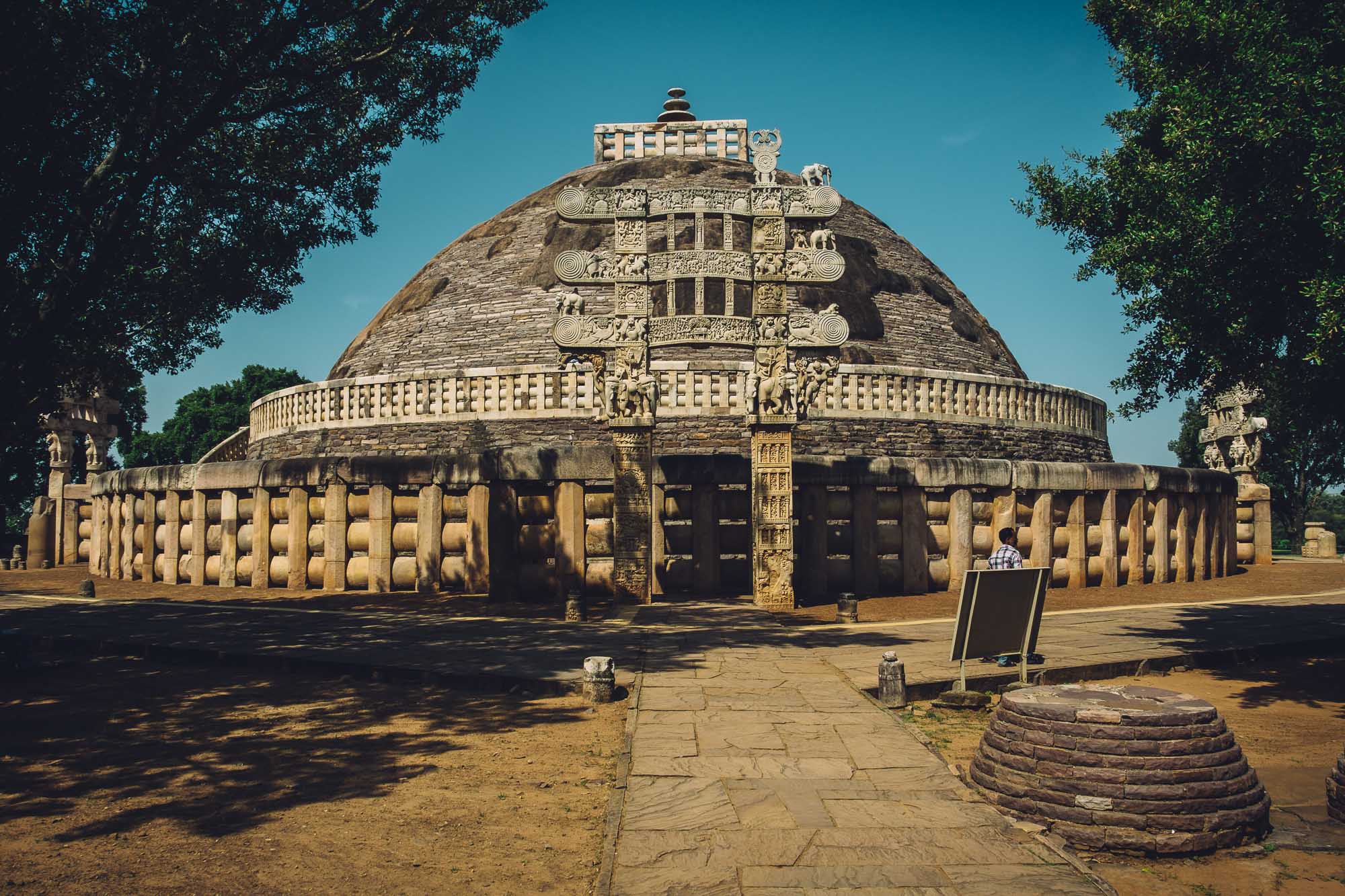
Saru Maru
The intimation of Sanchi is on the brow of a cave-front among the Sara-Maru caves, one-hundred-and-twenty kilometres south of Sanchi, in Madhya Pradesh. In Brahmi script carved in stone 2200 years ago, it proclaims that the emperor had been here, with his lady whom he’d not married yet, for vihara. The woman was Vidishadevi, who Ashoka would wed right there in Vidisha where Sanchi belongs, whence Vidishadevi came. He’d instal the earliest stupas for her in Sanchi with the relics of the Buddha embedded in them. Back now from Madhya Pradesh, I searched the Web and found this translation of the Saru Maru inscription:
The king, who (now after consecration) is called Piyadassi, (once) came to this place on a pleasure tour while he was still a ruling prince, living together with this (unwedded) consort. (Translation by Falk.)
Sanchi
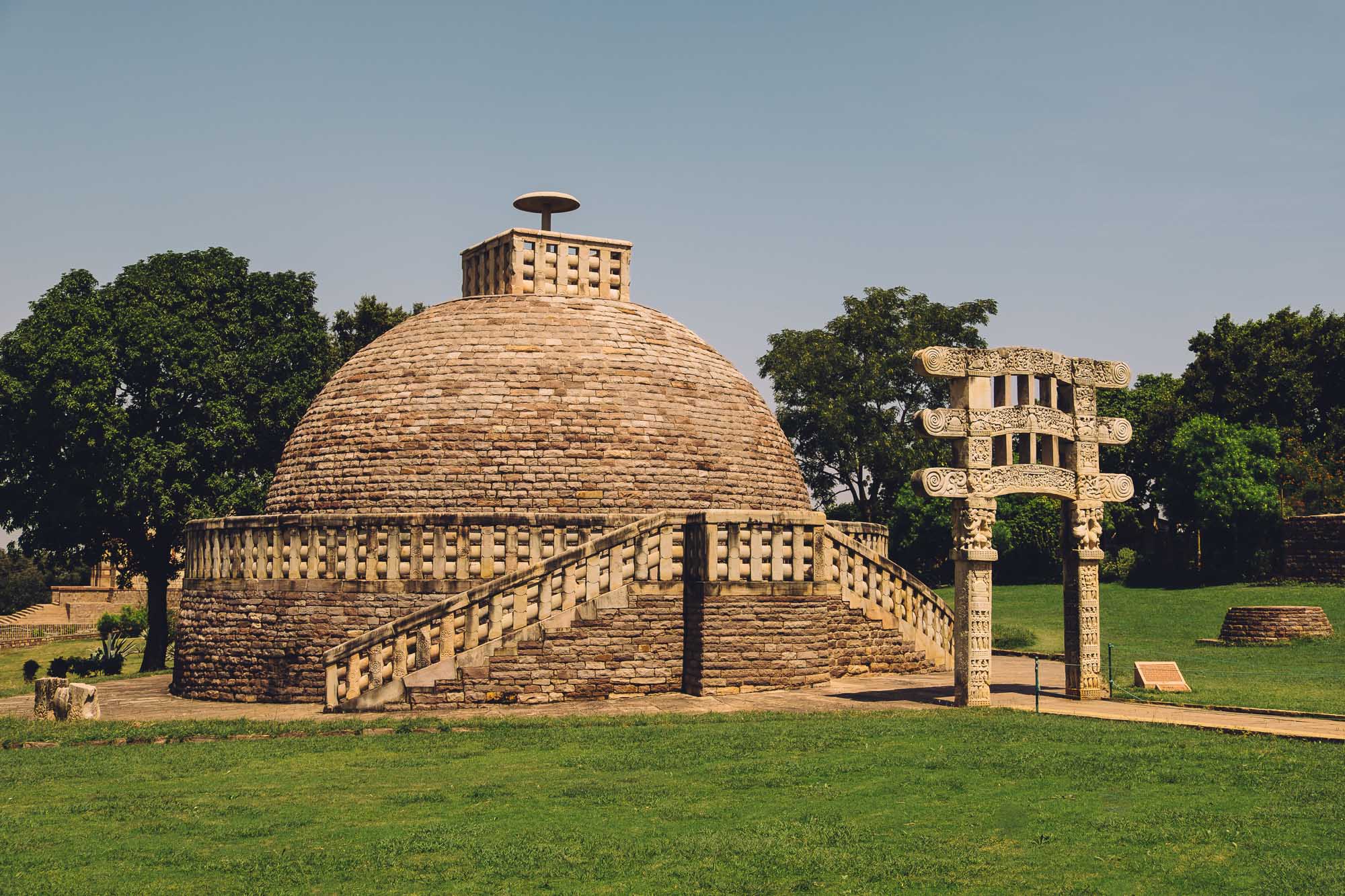
The outcrop whose peak houses the Sanchi stupas is on a vast plain interrupted in the distance by low hills with long ridges. The Halali flows a short distance away. There’s the wind of the plains about the monuments, but the sun bears down hard on the place, and the few trees around don’t help so much the crowds of tourists and devotees. As regards the stupas, they aren’t designed to offer shade.
Ah, but you feel no inconvenience in Sanchi. You only experience peace.
There are things to see: Fine carvings of Buddhist divinities and symbolisms of Buddha and Dharma and Sangha, all so masterfully rendered that you shake your head in disbelief that such work was possible in India’s first stone monuments. Besides the Buddha, there’s a panel showing Ashoka, on a thorana at the entrance — portly, seeming to be recovering from a fainting spell. Two queens support him: the sovereign was grieving the death of a Bodhi tree. After a few moments spent gazing at the art, you stop and turn inward, wanting to savour the spiritual. You climb the stairs of the stupa, and walk around the bare egg-shaped mound, and close your eyes, fingers grazing the mound to keep course and not fall off.
Done with Sanchi, walking the gentle gradient down the hill and out, you’re already speaking a lot less. You’re wondering, perhaps, if you shouldn’t turn Buddhist.
The Aaram Bagh Resort
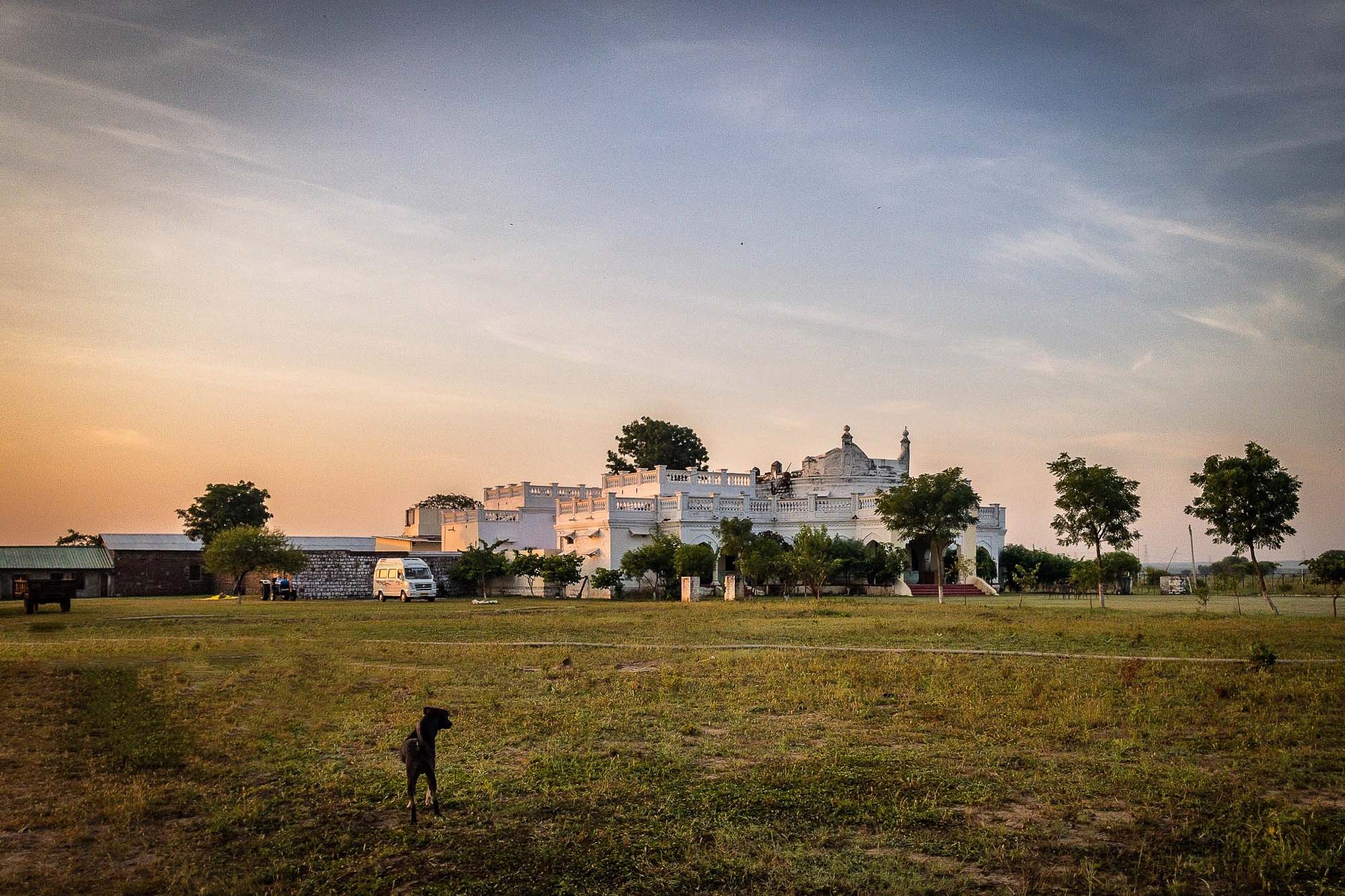
The waiter opened a wide visitor’s book over my dinner plate. He pointed to a comment in it by Raza Murad, a veteran Bollywood actor. Raza Murad had praised the meal, the service, the ambience. He hadn’t checked into the rooms, the waiter said, had dropped in only for lunch. Taking the cue, I lauded Aaram Bagh just as much, for service over two-days and for the delicious meals. Deserving praise, I must concede.
The resort is a compact palace a few kilometres off the highway, 12 kilometres from the Sanchi stupas. It was surrounded by cropped rice fields that run the distance to the hills that ring the place. Over dinner, our group of eight bantered about the use of a palace in a desolate place like that. “To come at harvest and count moolah.” Or, “For time with the mistress.” Checking the hotel’s website now, I read that successive maharajas visited here with their maharanis for rest. But also they used the place as a hunting lodge and had once invited the British viceroy to join in. They don’t say if the viceroy accepted to come.
Raza Murad’s latest big movie is Bajirao Mastani. He plays the Nawab of Deccan in it. At 71, the man has acted in some two-hundred films, and he is not finished yet.
Satdhara
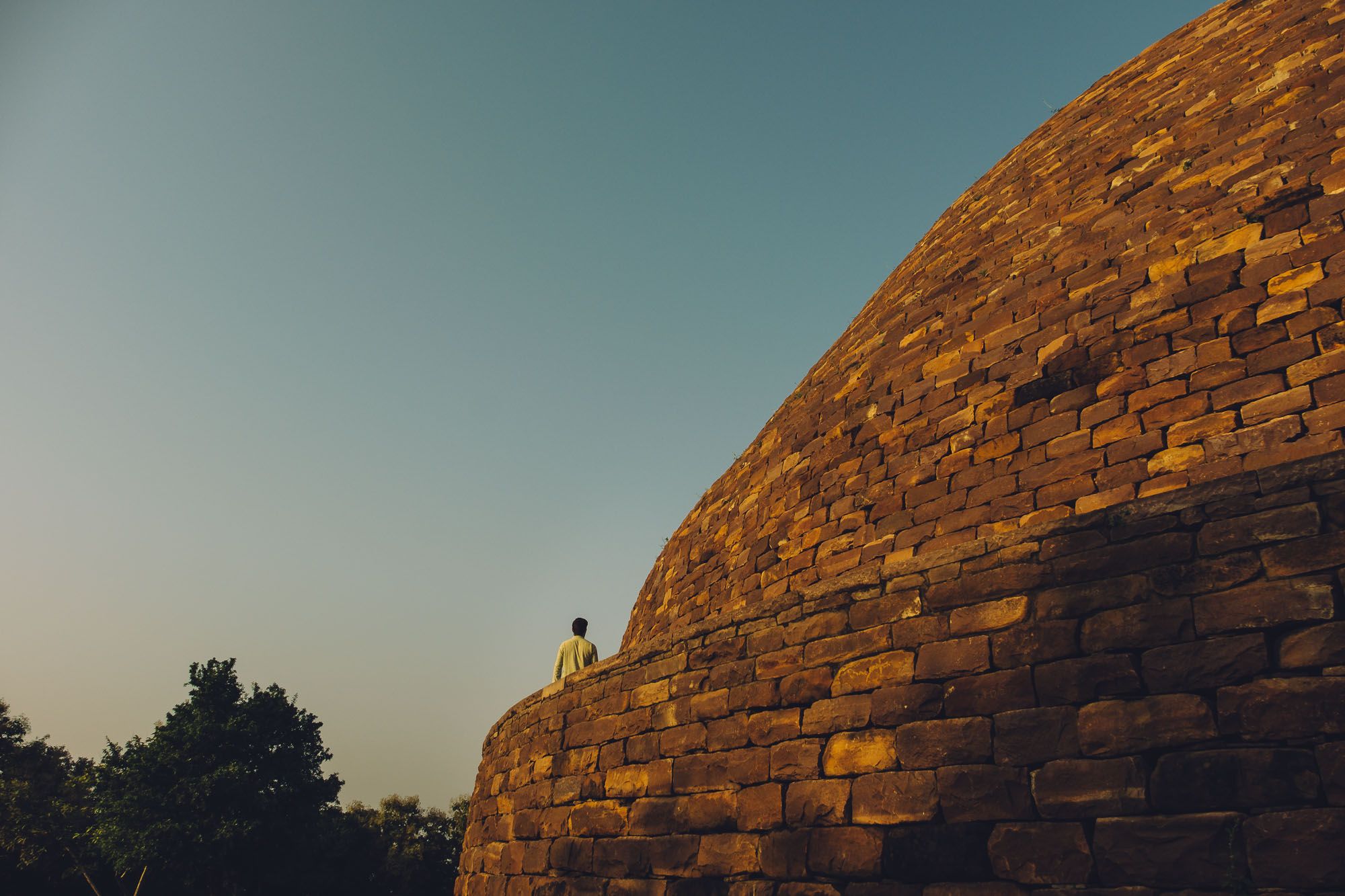
Only 3 kilometres from this vestige of modern-day royalty, at Satdhara, right by the Halali that flows in a deep, deep gorge, is a profusion of even more stupas, the highest among them almost as tall as Sanchi’s. We set out to Satdhara morning at 6:30. Not a single other tourist blighted the place, but a number of Langurs marked our passage from a distance. An occasional local passed us by, and one among them brought us to a fresh dig and said a hoard of begging bowls of bhikkhus were found there, taken away to the museum now. We gazed into the empty pit, so as to be nice to a local. Among the stupas are dispersed a host of monasteries, reduced to the base by time. It is a concealed expanse, leafy and serene, a beckoning place for the builders of monasteries.
The tale of Ashoka the Great and his power and riches and glory. The renunciation of them. Attaining the state of complete surrender. The contemplation of all these in today's context. We spent a good week in Madhya Pradesh.
One last thing …
Two boards on-site tell the facts of Satdhara, one in English, the other in Hindi. Two ladies in our group started on the English first and began to laugh right away. The text was long, and in time they lost control of their laughter and began to bend and shake and stamp their feet. They were finding the faulty English translation hilarious. An older lady in the group stood back of them with mild disapproval on her face. Done with English, the younger ladies turned to the Hindi.
“This is excellent Hindi,” they exclaimed in a moment.
“But of course,” the older lady said. “this is Madhya Pradesh!”
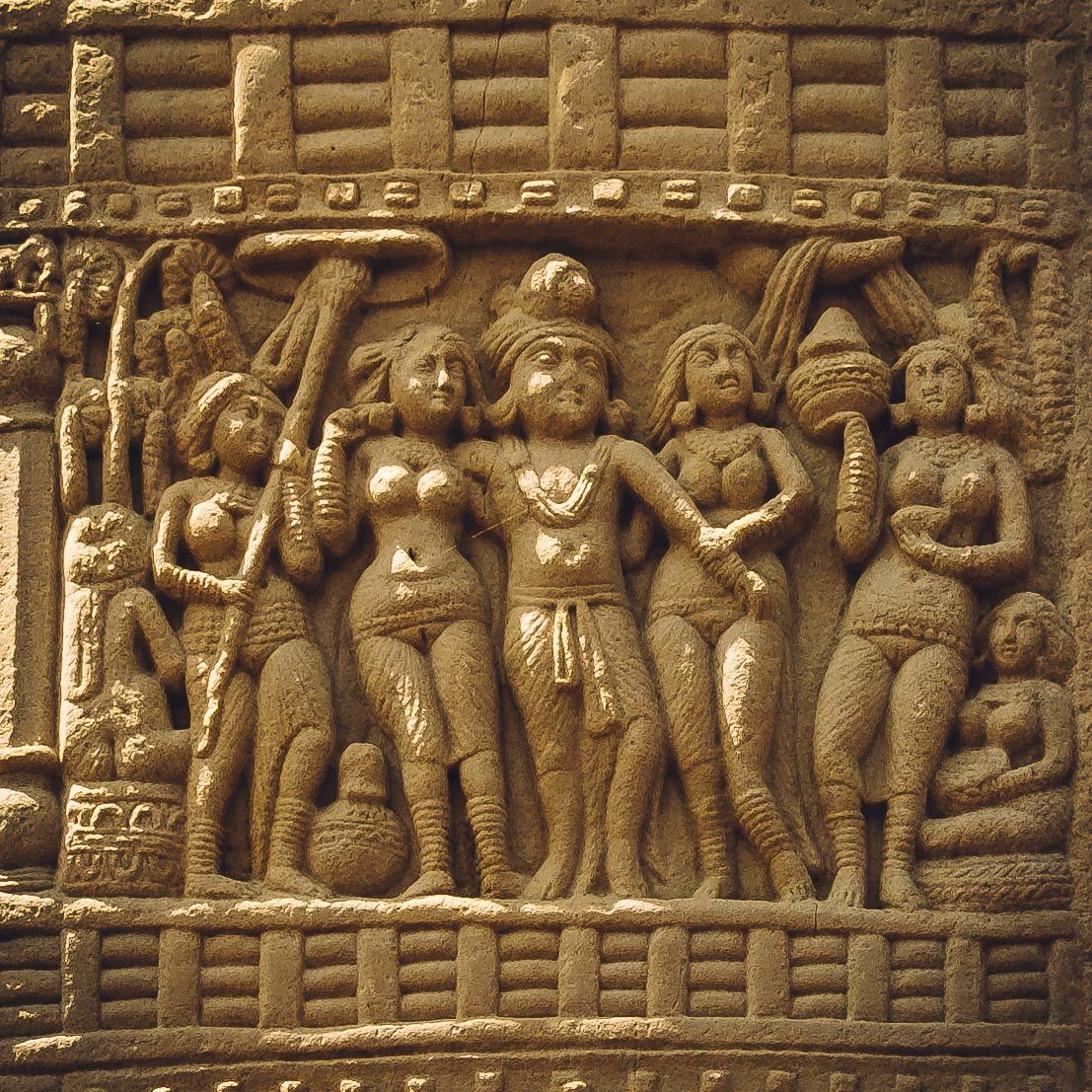
I made this trip with Carnelian.
